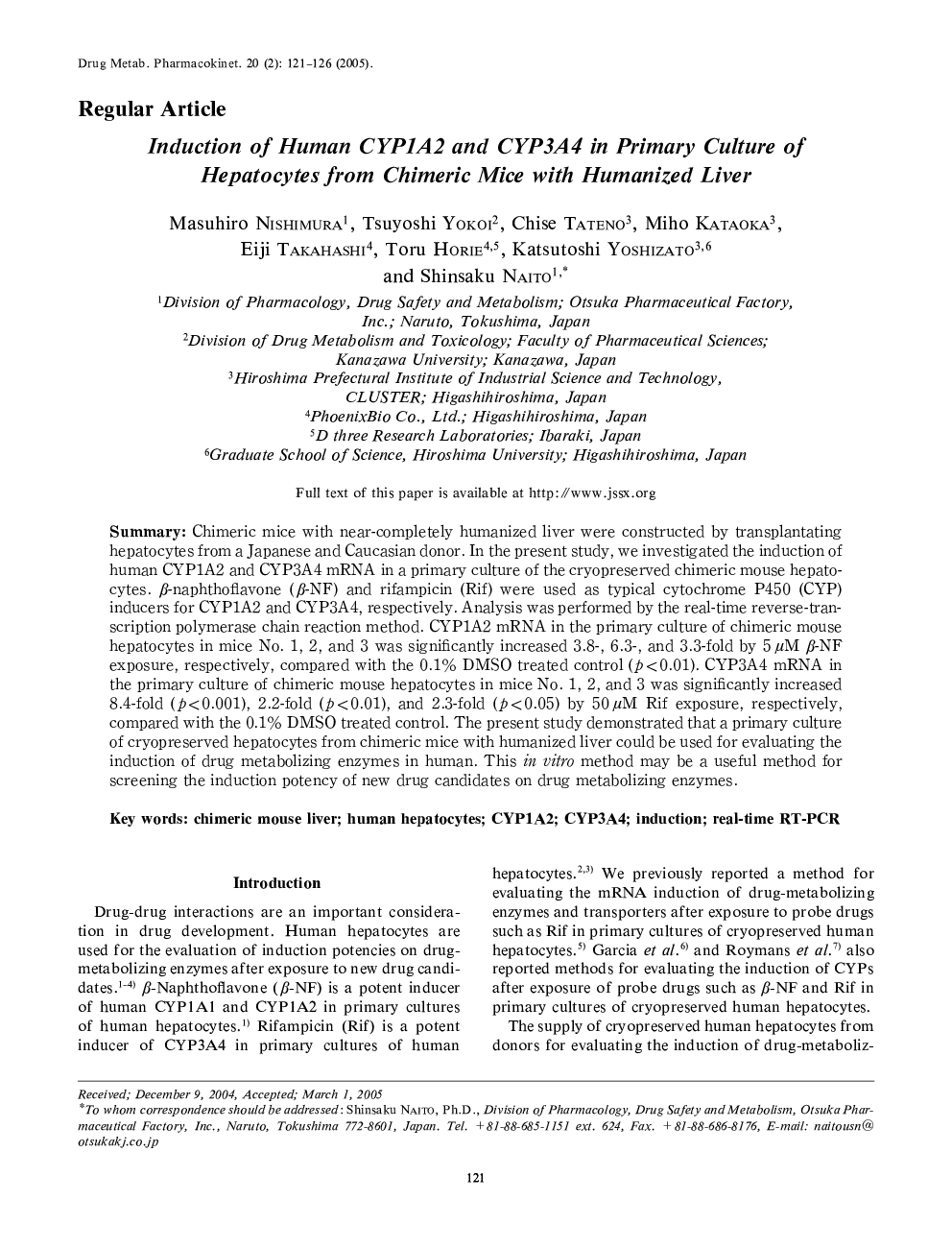| Article ID | Journal | Published Year | Pages | File Type |
|---|---|---|---|---|
| 8993097 | Drug Metabolism and Pharmacokinetics | 2005 | 6 Pages |
Abstract
Chimeric mice with near-completely humanized liver were constructed by transplantating hepatocytes from a Japanese and Caucasian donor. In the present study, we investigated the induction of human CYP1A2 and CYP3A4 mRNA in a primary culture of the cryopreserved chimeric mouse hepatocytes. β-naphthoflavone (β-NF) and rifampicin (Rif) were used as typical cytochrome P450 (CYP) inducers for CYP1A2 and CYP3A4, respectively. Analysis was performed by the real-time reverse-transcription polymerase chain reaction method. CYP1A2 mRNA in the primary culture of chimeric mouse hepatocytes in mice No. 1, 2, and 3 was significantly increased 3.8-, 6.3-, and 3.3-fold by 5 μΠβ-NF exposure, respectively, compared with the 0.1% DMSO treated control (p< 0.01). CYP3A4 mRNA in the primary culture of chimeric mouse hepatocytes in mice No. 1, 2, and 3 was significantly increased 8.4-fold (p< 0.001), 2.2-fold (p< 0.01), and 2.3-fold (p< 0.05) by 50 μΠRif exposure, respectively, compared with the 0.1% DMSO treated control. The present study demonstrated that a primary culture of cryopreserved hepatocytes from chimeric mice with humanized liver could be used for evaluating the induction of drug metabolizing enzymes in human. This in vitro method may be a useful method for screening the induction potency of new drug candidates on drug metabolizing enzymes.
Related Topics
Health Sciences
Pharmacology, Toxicology and Pharmaceutical Science
Drug Discovery
Authors
Masuhiro Nishimura, Tsuyoshi Yokoi, Chise Tateno, Miho Kataoka, Eiji Takahashi, Toru Horie, Katsutoshi Yoshizato, Shinsaku Naito,
